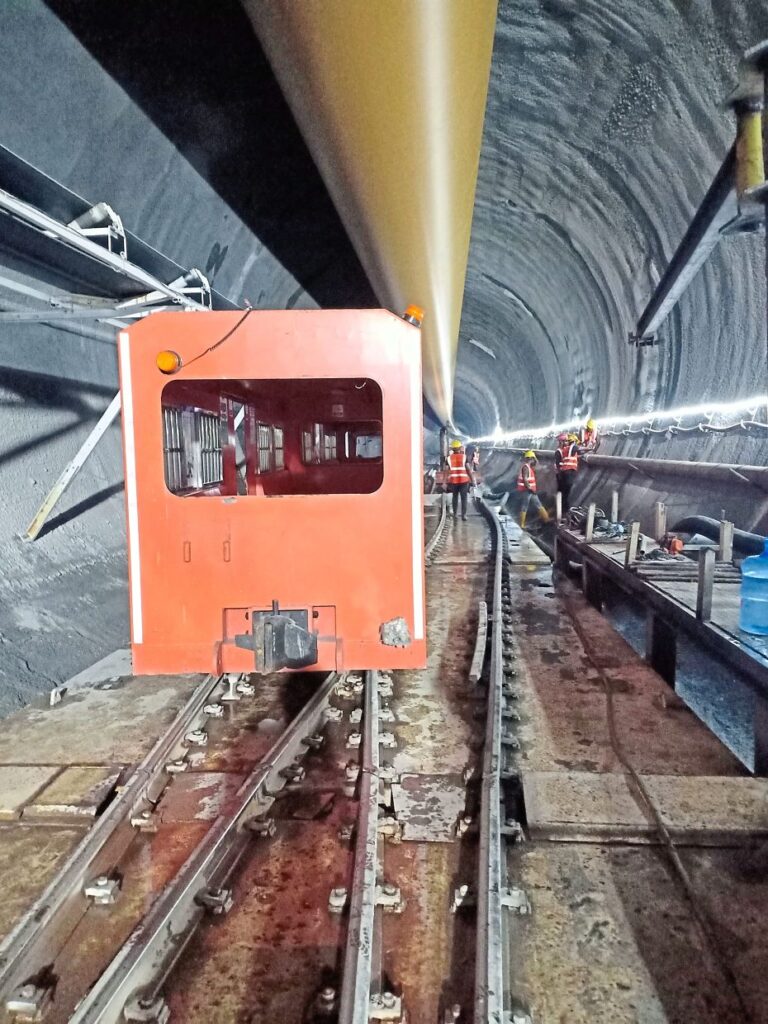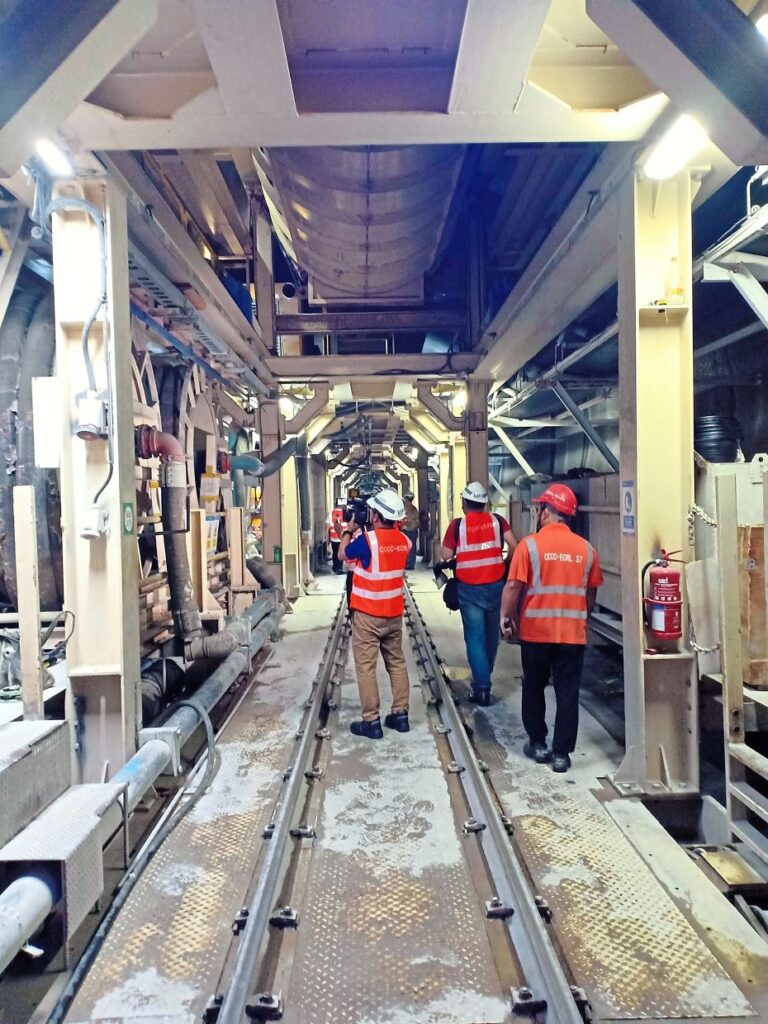Up, down, sideways – and underground

Great cities of the world are always characterised by iconic underground developments.
For instance, London’s famed metro network, fondly known as the Tube, celebrates its 160th anniversary this year. In 1863, the Metropolitan Railway started services between Paddington and Farringdon, making it the world’s first underground railway, serving six intermediate stations. Since then, the city has been crisscrossed by many more underground lines as planners saw the sense of putting some infrastructure underground so that valuable surface land could be freed for other uses.
The same scenario developed in Beijing, Berlin, Hong Kong, Moscow, New York City, Paris, Seoul, Singapore, Sydney and Tokyo, just to name a few.
In South-East Asia, rapid urbanisation is also seeing more rail lines and roads being built underground, along with buildings with deep basements and other infrastructure going underground. Just this week, Vietnam approved the proposal for Hanoi’s fifth metro line with a total length of 38.43km, with 6.5km of that underground, proving that surface land is increasingly valuable in this rapidly developing country.
Malaysia has also embarked on the quest to go underground with Kuala Lumpur leading the way when it constructed a single-basement level under Dataran Merdeka for parking for a few hundred cars as well as some small retail lots, in the 1990s. With the surge in private vehicle ownership since the launch of the Proton Saga on July 9, 1985, the need for parking has led to many subsequent developments in the Klang Valley having basement parking as projects jostle for surface land.
As far as public transport is concerned, the first rail tunnels in Kuala Lumpur were completed near the turn of the millennium, when the Kelana Jaya LRT opened in 1998 with an underground stretch serving five stations – Masjid Jamek, Dang Wangi, Kampung Baru, KLCC and Ampang Park – while the rest of the line’s stations are elevated, again in response to competing land uses.
For flood mitigation in downtown Kuala Lumpur, city planners thought long and hard in the 1990s before calling for proposals for critical drainage infrastructure to solve the problem. In the end, they approved a dual-purpose tunnel for drainage and traffic diversion called the Stormwater Management and Road Tunnel (SMART).
Construction of SMART by a consortium formed by MMC Bhd and Gamuda Bhd began in November 2003; it was completed in 2007, with the 9.7km tunnel becoming the longest stormwater drainage tunnel in South-East Asia. The main objective of this tunnel is to reduce flash floods in the city and to relieve traffic congestion along Jalan Sungai Besi and the Loke Yew flyover.
For civil engineer Dr Ooi Teck Aun, going underground from this point onward is the natural thing to do.
“We have been trying to promote the use of underground space as a sustainable method of development as there are many advantages.
“Firstly, you don’t need to cut down hills so there is no risk of landslides. During construction, the workers and activities are mostly underground, so there is little disturbance,” he tells Sunday Star in a recent interview.

The geotechnical specialist says going underground is the way forward in the future to ease pressure on surface land and, as demonstrated elsewhere, to help reduce traffic congestion while allowing for more green areas to be retained in cities.
Many planners contend that underground space is now the third dimension of any city when urban sprawl hits its limits after growing upwards or sideways.
This seems to be happening in the Klang Valley, albeit in limited ways, with construction of the MRT; the Kajang MRT line features seven underground stations, while the Putrajaya MRT has nine, with provisions for two more (Bandar Malaysia North and Bandar Malaysia South).
We believe that the proposed MRT3, also known as the Circle Line, will feature at least seven underground stations as it links up all the existing rail lines in the Valley.
“The proposed Bandar Malaysia township, the terminus of the Kuala Lumpur-Singapore high-speed rail, will also feature several layers of basement development,” says Ooi, who has been involved in the design and construction of airports, highways, ports and causeways in a long and storied career in engineering.
He has also worked on slope investigations, design and rectification; soils and materials investigations; and building foundation designs; as well as remedial works; he was part of the technical committee formed by the government to investigate the 1993 Highland Towers collapse.
Emerging projects that feature multilevel basements developments include the Tun Razak Exchange – more popularly known as TRX – a new international financial district that will open its doors on Nov 29.
Nearby, Merdeka 118, the second tallest building in the world set to open soon, also boasts several basements, demonstrating that there is a need to build upwards, downwards and sideways simultaneously as part of urban rejuvenation.
When it comes to regional development, work on building South-East Asia’s longest rail tunnel, the 16.4km Genting tunnel from Bentong in Pahang to Gombak, Selangor, is progressing well to allow the East Coast Rail Link to start operating by 2027.


As part of regional knowledge sharing, the geotechnical engineering community is doing what they can to share knowledge and inspire the emerging generation of young engineers. In relation to that, next March, Kuala Lumpur will host the second South-East Asian Conference and Exhibition on Tunnelling and Underground Space with the theme “Innovation and Sustainable Underground Space Development”.
Ooi, the organising chairman, says the event will be hosted by the tunnelling and underground space technical division which he founded in the Institution of Engineers Malaysia (IEM). The organising committee anticipates up to 500 delegates, 20 leading speakers from around the region, 50 innovative technical papers on tunnelling and underground development, and 30 exhibitors. Participants and speakers are also expected to come from Australia, China, India, Japan, New Zealand and South Korea.
Ooi, who began his career as an engineer with the Public Works Department (JKR) decades ago before entering the private sector, says he believed even way back then that tunnelling is technology that will prove to be a key part of sustainable development.
Following the completion of the SMART tunnel in 2006, Ooi organised the first international conference and exhibition on tunnels and underground space under the IEM, followed by events in 2011, 2015, 2017 and a virtual conference in 2020.
“I felt it was important to record the advances made in SMART,” says Ooi, who is currently consulting for the contractors handling the ongoing Sydney Metro West construction in Australia.
In particular, he wanted to bring to the forefront significant advances in tunnelling technology over the last four years, particularly in the use of artificial intelligence (AI) in automated tunnelling operations by tunnel boring machines (TBMs).
“We must continue to record all the innovations, particularly the use of AI, such as in MMC-Gamuda’s autonomous TBM fleet that was deployed in the construction of the Putrajaya MRT,” says Ooi.
He firmly believes the foray into underground space will not be stopping anytime soon, as no other country has stopped after they began.
“Singapore and Hong Kong are still tunnelling decades after they started, for metros and other infrastructure. It is like an evergreen development.”
At 81, Ooi seems as evergreen as the technology, and is a much sought-after speaker in the region.
“There is no end to learning,” he says with a smile.
“Being active is part of learning, and networking with participants and exchanging knowledge is something that I enjoy very much.”

